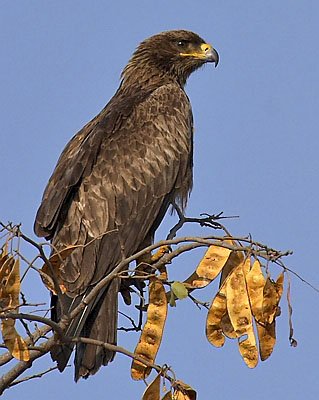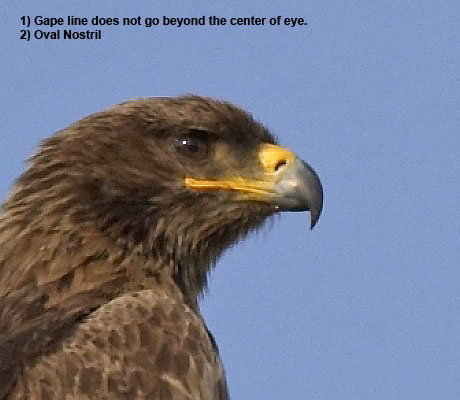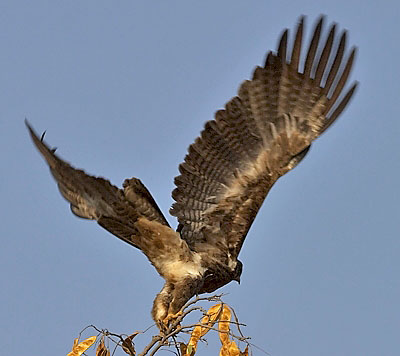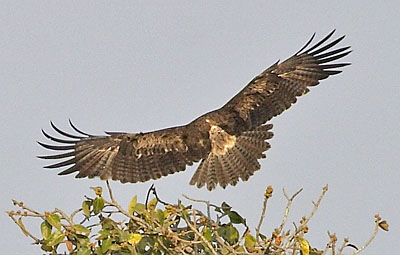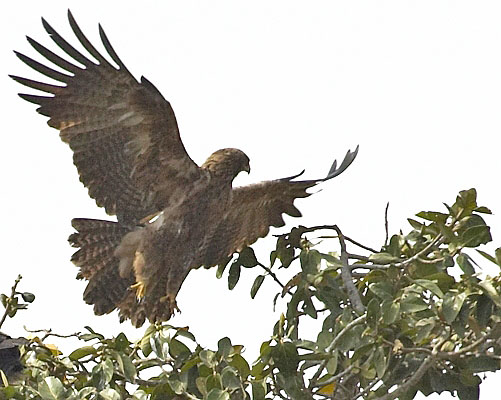You are here: Info » bird-info » tawny-eagle
Structurally long, parallel-edged wings, deeply fingered; long 7th primary (i.e. like Greater Spotted but unlike Lesser Spotted). This wing formula is right for Tawny (or Steppe). Greater Spotted does have a long 7th primary but the wings are maybe too long and/or narrow for that species and for Indian Spotted. The length of the 7th primary is not documented for Indian Spotted.
From below, strikingly barred flight feathers (including primaries) and tail feathers. This is much like an adult Steppe or Tawny Eagle and seems never to have been mentioned as an identification feature for Indian Spotted. It would be surprising if Indian Spotted was so clearly barred (since the most similar species Greater and Lesser Spotted are only indistinctly barred).
Pale inner primaries from below, and less obviously, outer primaries. From a distance this would probably look like the grey patch of a Tawny Eagle.Mottled pale greater underwing-covert bar, like a sub-adult Steppe Eagle.
Suggestion of a double carpal crescent but because of mottling this is probably not a useful feature. Upperwing-coverts slightly paler than flight feathers.
Pale “arc” on rump from above. Pale undertail-coverts.
Legs appearing relatively thick and loosely well-feathered. Very much a Tawny Eagle feature rather than an Indian Spotted which is considered to have relatively thin, tightly feathered legs.
Gape relatively long, extending slightly beyond the centre of the eye but certainly not to the rear. Not appearing especially thick. Bill relatively large. On gape length alone it would be difficult to exclude Indian Spotted Eagle, but with such good views this would be expected to show a slightly thicker gape and smaller bill.
Nostril clearly elongated, or oval, as opposed to circular. A diagnostic difference between Tawny and Indian spotted, the latter having a circular nostril. This is probably the key identification feature but is surprisingly difficult to assess accurately even with close views in the field: the angle of the head and the cere
sometimes overlapping the nostril often add confusion.
Dark brown iris. Current literature is contradictory regarding the iris colour of both Tawny Eagle and Indian Spotted, so it is not known whether this is a useful identification feature.
